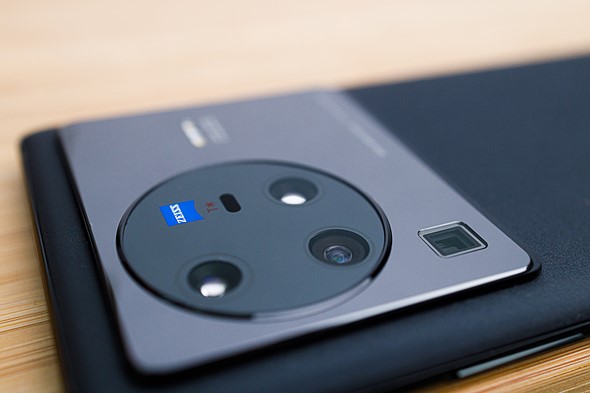 |
Vivo has introduced the worldwide launch of its newest flagship machine, the X80 Professional. As with previous vivo flagships, the X80 Professional places a heavy emphasis on its imaging capabilities with a powerful quadruple digicam array on the again headlined by a customized Samsung ISOCELL GNV 50MP picture sensor with optical picture stabilization.
Since vivo focuses a lot on the imaging capabilities of its X80 Professional, let’s begin off by breaking down the up to date digicam array and imaging options vivo’s newest flagship has to supply. Headlining the rear digicam array is a customized 50MP ‘Extremely-Sensing’ Samsung ISOCELL GNV sensor that makes use of vivo’s sensor-shift optical picture stabilization to maintain the vast digicam secure. Each the 48MP 1/2.0” ultrawide module and 12MP 2x ’portrait’ digicam module seem like the identical discovered within the X80 Professional’s predecessors, however this yr vivo has added sensor-shift optical picture stabilization to the portrait digicam for the primary time ever. Rounding out the four-camera array is identical 8MP periscope 5x telephoto digicam module. The front-facing selfie digicam makes use of a 32MP 1/2.8”-type sensor with a 26mm full-frame equal F2.5 lens in entrance.
 |
The entire cameras on the rear array of the X80 Professional use Zeiss’ T* coating, which vivo says ‘enhances seen gentle transmission fee, improves picture high quality, and extra precisely reproduces colours.’ This coating works alongside numerous anti-reflection components and different optical applied sciences to supply improved picture seize.
Whereas the sensors and optics play a significant function in capturing the pictures, the entire captured knowledge has to get processed someplace and that’s the place vivo’s second-generation V1+ customized picture sign processor (ISP) comes into play. This ISP is designed in-house by vivo to spice up the capabilities of its photograph and video options. The chip makes use of ‘an equal 32MB host-level SRAM for sooner knowledge processing’ and provides up an information throughput pace of ’roughly 8GB/s (precise worth) and as much as 25GB/s (design worth) in concept.’ All of that is executed whereas utilizing ‘about 72% much less energy than different telephones operating the identical [image processing] algorithms.’
 |
Since vivo’s partnership with Zeiss started again in December 2020, the corporate has steadily been including extra Zeiss-branded options and this yr is not any completely different. Along with the T* coating, vivo is as soon as once more utilizing Zeiss-branded simulated bokeh rendering for its portrait mode characteristic, with simulations impressed by Zeiss’ Biotar, Sonnar, Planar and Distagon lens lineups. New this yr is a Zeiss Cinematic Video Bokeh mode that works in each video and photograph modes to seize a simulated anamorphic have a look at a 2.39:1 side ratio, full with the signature oval bokeh and look we’re accustomed to associating with anamorphic lenses.
 |
The X80 Professional additionally options Zeiss Pure Shade rendering, which works with all digicam modules to offer what’s a extra pure rendering of the scene. As you’ll see within the gallery under, vivo’s native coloration rendering creates very vibrant, saturated photos, whereas the Zeiss Pure Shade mode extra correct displays what your eyes are seeing in actual life. Whereas we’ve solely had the cellphone in hand just a few days, we’ve captured a set of pattern photos taken with the varied seize modes for every of the 4 rear digicam modules. Every picture description explains which digicam module it was shot with and with what taking pictures modes had been turned on.
On the video entrance, vivo has has added new AI-powered video enhancements for low-light scenes, a brand new Energetic Centering OIS system that makes use of OIS and digital picture stabilization (EIS) to assist scale back jitter when taking pictures handheld video and a brand new 360º Horizon Leveling Stabilization characteristic that makes use of the cellphone’s gyro sensor to higher stabilize video to the horizon when the cellphone will get rotated.
 |
With the entire digicam options out of the way in which, let’s check out what’s powering your complete machine. The X80 Professional is constructed round a Snapdragon 8 Gen 1 chipset with enhanced LPDDR5 RAM and UFS 3.1 stable state storage. To maintain every little thing cool, vivo makes use of an ‘Extremely Massive Liquid Cooling Vapor Chamber’ for warmth dissipation. In entrance of all the ability is a 6.78” LTPO3 AMOLED (120Hz, HDR10+, 1500 nits peak) show that gives a 1,440 x 3,200 pixel decision (517ppi) in 20:9 ratio. Throughout the show is a brand new ‘3D Ultrasonic Massive Fingerprint Sensor’ made by Qualcomm that’s each bigger and sooner than that discovered on its predecessors. Resulting from its bigger measurement, there’s additionally an additional safety characteristic that permits you to require two fingers to be scanned directly for added safety from by accident unlocking your machine.
 |
The charging capabilities of the X80 Professional embody 80W FlashCharge, in addition to 50W wi-fi Flash Cost with appropriate chargers. With the 80W charging, the X80 Professional’s 4,700mAh battery could be absolutely charged from useless in simply 35 minutes. Connectivity consists of Wi-Fi 802.11 (a/b/g/n/ac/6), Bluetooth 5.2, GPS, NFC, an infrared blaster and single USB Sort-C 3.1 port on the underside of the machine for charging and knowledge switch.
 |
The worldwide version of the vivo X80 Professional is offered in Cosmic Black, Blue and Orange colorways in three RAM/storage configurations: 8GB RAM/256GB UFS 3.1, 12GB RAM/256GB UFS 3.1 and 12GB RAM/512GB UFS 3.1. Pricing will fluctuate relying available on the market, but when previous launches vivo world launches are something to go by, we’ll probably see the roll out begin in India earlier than making its method to east Asia and Europe, with costs ranging between $900–1,400, relying on the configuration you go together with.

